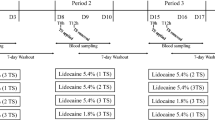Abstract
Purpose. We report that experimentally measured skin permeability to hydrophilic solutes increases with decreasing contact area between the formulation and the skin. Our results suggest that an array of smaller reservoirs should thus be more effective in increasing transdermal drug delivery compared to a large single reservoir of the same total area.
Methods. Experimental assessment of the dependence of skin permeability on reservoir size was performed using two model systems, an array of liquid reservoirs with diameters in the range of 2 mm to 6 mm and an array of gel disk reservoirs with diameters in the range of 3 mm to 16 mm. Full thickness pig skin was used as an experimental model. Two molecules, sodium lauryl sulfate (SLS) and oleic acid, were used as model penetration enhancers.
Results. Mannitol transport per unit area into and across the skin increased with a decrease in the contact area between the skin and the formulation. Mannitol permeability increased approximately 6-fold with a decrease in the reservoir size from 16 mm to 3 mm in presence of 0.5% SLS in PBS (phosphate buffered saline) as a permeability enhancer. Similar results were obtained when oleic acid was used as an enhancer.
Conclusions. To explain the observed dependence of transdermal transport on contact area a simple mathematical model based on skin geometry in the reservoir was developed. The model predicts a lateral strain in the skin due to preferential swelling of skin upon penetration of water. We propose that this lateral strain is responsible for the increased skin permeability at lower reservoir sizes.
Similar content being viewed by others
REFERENCES
A. Bouwstra. The skin, a well organized membrane. Coll. Surf. A. 123-124:403-413 (1997).
S. Mitragotri. Synergistic effect of enhancers for transdermal drug delivery. Pharm. Res. 17:1354-1359 (2000).
S. Mitragotri, D. Blankschtein, and R. Langer. Ultrasound-Mediated Transdermal Protein Delivery. Science 269:850-853 (1995).
A. V. Badkar and A. K. Banga. Electrically enhanced transdermal delivery of a macromolecule. J. Pharm. Pharmacol. 54:907-912 (2002).
C. B. Finnin and M. T. Morgan. Transdermal penetration enhancers: Applications, limitations and potential. J. Pharm. Sci. 88:955-958 (1999).
Y. S. Papir, K. Hsu, and R. H. Wildnauer. The mechanical properties of stratum corneum. I. The effect of water and ambient temperature on the tensile properties of newborn rat stratum corneum. Biochim. Biophys. Acta 399:170-180 (1975).
L. Norlen, A. Emilson, and B. Forslind. Stratum corneum swelling. Biophysical and computer assisted quantitative assessments. Arch. Dermatol. Res. 289:506-513 (1997).
B. Van Duzee. The influence of water content, chemical treatment and ambient temperature on rheological properties of skin. J. Invest. Dermatol. 71:140-144 (1978).
G. B. James, B. Jemec, B. I. Jemec, and J. Serup. The effect of superficial hydration on mechanical properties of skin in vivo: implications for plastic surgery. Plast. Reconstr. Surg. 85:100-103 (1990).
A. Alonso, N. Meirelles, V. Yushmanov, and M. Tabak. Water increases the fluidity of intercellular membranes of stratum corneum: Correlation with water permeability, elastic and electrical resistance properties. J. Invest. Dermatol. 106:1058-1063 (1996).
T. Yamamura and T. Tezuka. The water holding capacity of the stratum corneum measured by 1H-NMR. J. Invest. Dermatol. 93:160-164 (1989).
L. Pedersen and G. Jemec. Plasticising effect of water and glycerin on human skin in vivo. J. Dermatol. Sci. 19:48-52 (1999).
I. H. Blank. Further observations on factors which influence the water content of the stratum corneum. J. Invest. Dermatol. 21:259-271 (1953).
E. Sparr and H. Wennerstrom. Responding phospholipid membranes-interplay between hydration and permeability. Biophys. J. 81:1014-1028 (2001).
D. A. Van Hal, E. Jeremiasse, H. E. Junginger, F. Spies, and A. Bouwstra. Structure of Fully Hydrated Human Stratum Corneum—a freeze fracture electron microscopy study. J. Invest. Dermatol. 106:89-95 (1996).
M. Buchanan, J. Arrault, and M. Cates. Swelling and dissolution Lamellar phases: role of bilayer organization. Langmuir 14:7371-7377 (1998).
S. Diridollou, F. Patat, F. Gens, L. Vaillant, D. Black, J. Lagarde, Y. Gall, and M. Berson. In vivo model of the mechanical properties of the human skin under suction. Skin Res. Technol. 6:214-221 (2000).
M. Walser. Role of edge damage in sodium permeability of toad bladder and a means of avoiding it. Am. J. Phys. 219:252-255 (1970).
S. Helman and D. A. Miller. Edge damage effect on electrical measurements of frog skin. Am. J. Phys. 225:972-977 (1973).
S. Helman and D. A. Miller. Edge damage effect on measurement of urea and sodium flux in frog skin. Am. J. Phys. 226:1198-1203 (1974).




